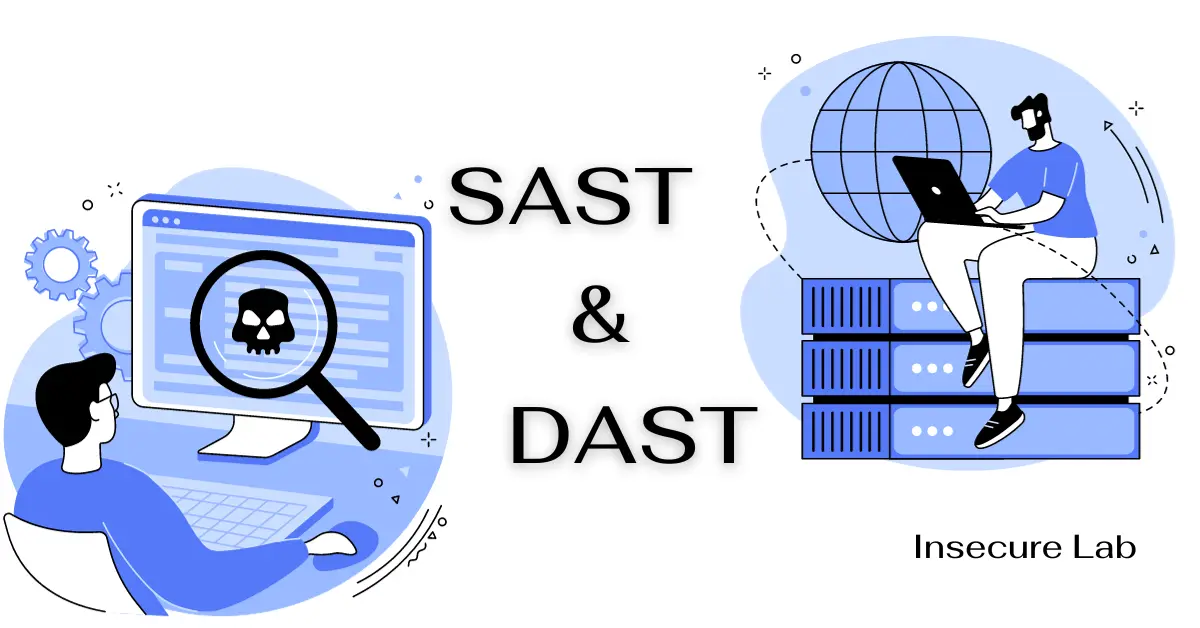Table of Contents
In this guide, we’ll explain what SAST and DAST are, explore the differences between them, and provide information about popular SAST and DAST tools.
What are SAST and DAST?
SAST and DAST are methods used to identify security vulnerabilities in software applications. They are part of a broader suite of security testing strategies employed to enhance software security.
What is SAST (Static Application Security Testing)?
SAST is a white-box testing methodology used to identify security vulnerabilities in software applications by analyzing source code, byte code, or binary code. It is performed in the early stages of the software development lifecycle (SDLC), even before the code is executed.
SAST Tools
SAST tools are typically language-specific, supporting various programming languages such as Java, C++, Python, and more. These tools perform deep code analysis, looking for potential issues such as SQL injection, cross-site scripting (XSS), buffer overflows, and other security vulnerabilities.
Here are some popular tools for SAST:
- SonarQube: An open-source platform for continuous inspection of code quality and security vulnerabilities.
- Checkmarx: A comprehensive SAST tool that scans source code and binary code to identify vulnerabilities and compliance issues.
- Fortify: Provides static code analysis and a range of security-focused plugins for integrated development environments.
- Veracode: Offers cloud-based SAST scanning for web applications and provides actionable reports to developers.
What is DAST (Dynamic Application Security Testing)?
DAST is a black-box testing methodology that identifies security vulnerabilities in running applications. It simulates external attacks on an application in its running state (i.e., runtime) to detect vulnerabilities that an attacker can exploit.
DAST Tools
DAST tools simulate real-world attacks, including SQL injection, XSS, and CSRF, to identify vulnerabilities as they would appear to an external attacker. These tools also test authentication mechanisms, session management, and access controls by attempting to bypass security features.
Here are some popular tools for DAST:
- OWASP ZAP (Zed Attack Proxy): An open-source DAST tool designed for finding security vulnerabilities in web applications.
- Burp Suite: A popular toolkit for web application security testing that includes both manual and automated DAST capabilities.
- Nessus: A widely-used DAST tool for vulnerability scanning and assessment of network and web applications.
- AppScan: IBM’s DAST tool that identifies vulnerabilities in web and mobile applications through dynamic analysis.
SAST vs DAST
Difference Between SAST and DAST
| Aspect | SAST (Static Analysis) | DAST (Dynamic Analysis) |
|---|---|---|
| Methodology | White-box testing | Black-box testing |
| Stage of Testing | Early in SDLC (coding phase) | Later in SDLC (post-deployment) |
| Analysis | Analyzes source code, bytecode, or binaries. | Tests the running application in a live environment. |
| Detection | Detects code-level vulnerabilities, design flaws, and coding errors. | Identifies runtime vulnerabilities, exploits, and configuration issues in deployed applications. |
| Remediation | Provides detailed information for developers to fix vulnerabilities during development. | Offers insights into real-world vulnerabilities but may not provide specific code-level guidance for remediation. |
| Integration | Often integrated with IDEs for real-time feedback to developers. | Typically used as a separate testing phase or tool in the development process. |
| Automation | Can be automated as part of the CI/CD pipeline. | Can be automated but may require manual configuration for testing scenarios. |
| Strengths | Early detection, comprehensive code analysis | Real-world attack simulation, runtime issues |
| Limitations | May miss runtime issues and environment interactions | Late discovery of vulnerabilities, no source code insight |
Summary
Both SAST and DAST play important roles in a comprehensive application security strategy. While SAST is effective at early detection and full code analysis, DAST excels at identifying vulnerabilities that are exposed only during runtime or in a live environment.
Integrating both methods provides a more holistic view of the security posture of the application, ensuring that vulnerabilities are identified and mitigated at different stages of the development lifecycle. It is important to choose the right tool based on the specific needs and context of the project.

